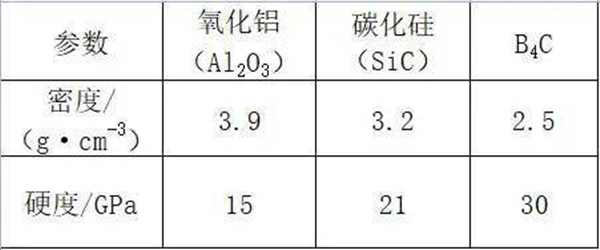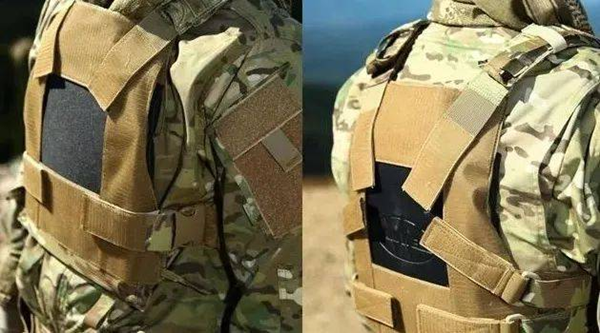Boron carbide ceramics for human protective equipment
As a basic component of soldiers' combat system, human protective equipment can absorb and dissipate the kinetic energy of warheads or fragments, prevent penetration, effectively protect important parts of soldiers, and is an important guarantee for improving soldiers' battlefield viability. The human body protective equipment is a material synthesis composed of one or several optimized designs of high-strength high modulus anti ballistic fiber, high-performance anti ballistic ceramics, special adhesives and other functional materials. Among them, bulletproof vests and bulletproof helmets are made of bulletproof fiber composite materials, which are mainly used to defend pistol shells and fragments with low invasiveness.

(Common bulletproof ceramics and their basic properties)
At present, the bulletproof ceramics that have been popularized and applied in human protective equipment and their basic properties are shown in the figure. It can be seen from the figure that boron carbide (B4C) ceramic has the highest hardness and lowest density, and is the most ideal armor ceramic material in terms of performance. With the increasingly urgent demand for lightweight and high protection applications of human protective equipment and the successful promotion of B4C ceramic industrialization, B4C has been applied as one of the mainstream ceramic materials for preparing bulletproof insert plates.
As the enhanced protection component of the bulletproof vest, the active bulletproof insert plate is composed of B4C ceramic plate and ultra-high molecular weight polyethylene fiber composite material plate. Its basic protection principle is: use B4C bulletproof ceramic to passivate and abrade the projectile, and then use the fiber composite material to absorb the residual impact kinetic energy. According to different application environments and protection requirements, B4C ceramic patch panels are divided into two types: multi curved monolithic ceramic patch panels and single curved patch ceramic patch panels.

